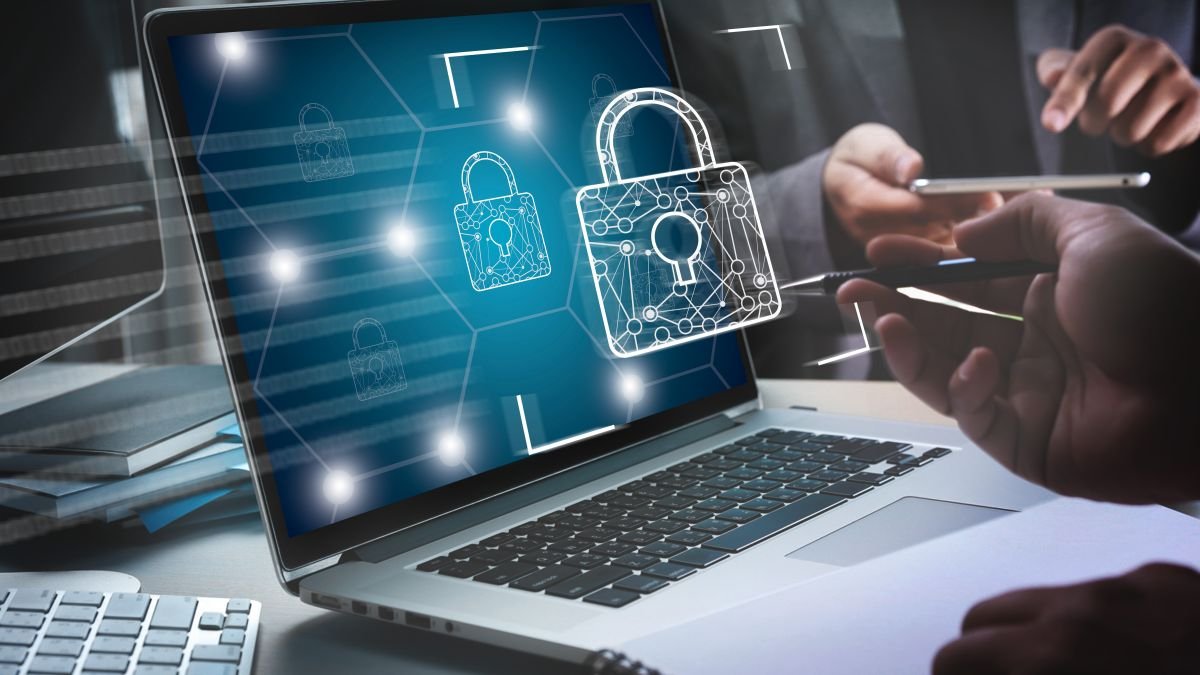

As Covid 19 continues to pave the way for a new world of remote work, it's important that organizations continue to take security seriously. Having multiple people accessing a network from multiple locations is risky, so implementing strong multi-factor authentication, data management, and encryption is essential to navigating this new era. While many organizations are still working remotely after the pandemic, the question remains: what will the office be like when we return? A whole new look and feel in the office
A whole new look and feel in the office
It's no longer a huge surprise to walk into a store and see markers on the floor, indicating a safe distance between you and others, and pointing to one-way systems and hand sanitizer dispensers. But while working with these necessary changes in a retail environment can be complicated, they are challenges magnified in an office environment. From group meetings at someone's desk to ask a quick question, to coffee breaks in the kitchen and beyond, many offices are designed to maximize space and attract more people. For companies that will reopen their offices, the focus will be more on technology in the battle to keep employees safe. Some are already investing in IoT technology to monitor things like sufficient airflow, whether employees are far enough from each other, and even how many people can be in the office at any one time. For example, some businesses will rely on internal intelligence, typically reserved for intruder deterrence and theft alerts, to help control physical distance. Still others will use technology to verify that the employee or visitor, upon entry, is equipped with a personal protective device, such as a mask, and is not exhibiting any symptoms of fever or abnormal temperature. . On a macro scale, more and more countries are developing contact tracing apps to encourage citizens to register symptoms. This will allow authorities to alert people if they have come into contact with someone infected with the virus. This network of smart devices is expected to continue to grow at an unprecedented rate, driven by new connection demands stemming from the pandemic.Create security risks
A new IoT-based lifestyle in the workplace is not without its security challenges. Even before the lockdown, cyber security threats with IoT devices were becoming increasingly sophisticated. According to Gartner, in 2018, nearly 20% of organizations had observed at least one IoT-based attack in the past three years. With lockdown drastically increasing daily screen time, exposure to cybersecurity vulnerabilities and data breaches from IoT-based devices will also increase. For example, last March, the National Center for Cyber Security (NCSC) issued a security advisory, urging those who use smart cameras and baby monitors at home to protect their devices from cybercriminals. IoT devices often come under attack because of the valuable data they contain, and this will only increase as companies sit on top of increasingly important mountains of information related to their employees' activities. Not only that, but IoT devices can also be used as a gateway into a company's network, allowing hackers to open the door to the realm of corporate secrets or simply wreak havoc by taking control of the networks. companies. own devices. With the UK government planning to legislate security requirements for manufacturers of smart devices, companies need to protect their own.Secure IoT device data
With only about 13% of smart device manufacturers incorporating even the most basic cybersecurity approaches into products, protecting IoT devices and the data stored on them should be a top priority. Unfortunately, many businesses err on the side of simple mistakes, like not having a centralized function to manage all of their devices. There is also a risk, as we digitally evolve the workplace and introduce these devices, that IT security teams may not be fully aware of the threats and risks. To get started, security teams need to start mitigating risk by monitoring unusual traffic patterns and data flows, as well as isolating IoT devices in certain areas of the network. Businesses must also invest in devices with the proper security controls, such as encryption, multi-factor authentication, and key management. If these measures are not in place for the devices they already have, they should implement them themselves or partner with a company that has the knowledge and experience to do so. Finally, companies can help protect themselves by investing in properly training their employees on IoT risks, such as the threats of introducing unsecure devices onto the corporate network. It is important to remember that IoT security is not ad hoc. In an ever-changing cyber landscape, the security of a device must be upgradable and upgradeable throughout its lifecycle. Thales' Security by Design approach ensures that IoT security is considered from the start of project design and that devices are protected in the right place and at the right level to meet the needs of each deployment.The future of business
As many employees migrate to a more flexible way of working, many people will be excited to return to the office and experience the "new normal." While technology has proven to be of great help in achieving this, companies must be careful to take proper security precautions or risk leaving the door open for hackers.- Gorav Arora, CTO, CTO Office, Cloud Protection and Licensing at Thales.